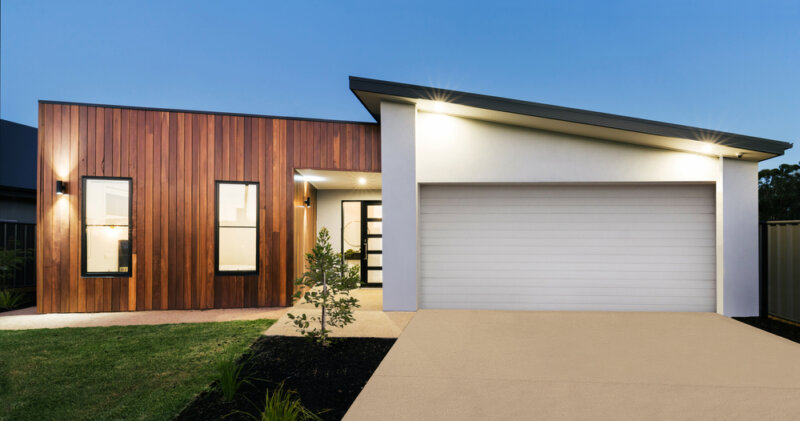In winter, timber cladding is an excellent method to shield a structure from moisture and air infiltration. To safeguard your building’s outer walls, architects and builders insert pieces of wood. Therefore, the lumber will aid in preserving the structural integrity of your home. Additionally, the businesses increase the worth of your building by producing a lovely finish. As a result, weatherboarding has become quite popular among designers since it improves a building’s exterior.
What Does Timber Cladding Mean?
Timber cladding is a popular method for giving a building’s outside a lovely finish. Timber (sometimes used synonymously with wood) refers to the material formed by these components. In contrast, cladding refers to the components bonded to a primary structure to create this exterior structure.
Why is Timber Cladding the Best Option for Your Project?
You might be unsure whether the wood is the ideal material for your cladding projects in the first place, so let’s address that before going into more depth about the factors you should consider when selecting wooden cladding.
When choosing a cladding material, there are several things to consider. Depending on your desired appearance, quality, and utility requirements, you may want to consider brick, stone, concrete, tiles, PVCu, glass, or metals like steel and aluminium.
However, here are some reasons why timber cladding is the best option:
- adaptable
- classic style
- easily accessible and reasonably priced
- natural
- safe, durable, and simple to use
What Kind of Wood Works Best for Exterior Cladding?
A decent external cladding timber should be able to withstand all that the seasons can throw at it and be resistant to insect and fungus assault, in addition to being visually appealing. Dimensional stability is also essential, in addition to this inherent endurance.
Some of the most common choices for exterior wood cladding are softwoods like Alaskan Yellow Cedar, Western Red Cedar, Siberian Larch, and Douglas Fir since they are affordable. However, some beautiful hardwoods work nicely as well.
Yũkari Hardwood Timber Cladding
The Japanese hardwood Yũkari has a rich, dark hue. It may be cut and sanded to a smooth, flat surface because of its highly fine grain and few knots. The strength and durability of hardwoods make them perfect building materials, and Yũkari is no exception.
Oak Cladding
Oak has a long history of use as a durable, reliable building material. When cured by air or in a kiln, oak emanates quality and provides structural stability with little upkeep. It is a product that will withstand the test of time.
Oak Charred Honshu, which has a rough surface, and Oak Wire Brushed Hokkaido, which has a smooth finish, are two alternatives for charred timber cladding (Perth) that particular designers provide. Oak is a high-end commodity with a price to match, despite being quite desirable. It is out of most clients’ price range to complete a substantial cladding job.
Grained Siberian Larch Cladding
Larch is one of the most often used types of exterior wood cladding. After the wood has been charred, thorough brushing can highlight its unusual grain pattern. Larch is a softwood that grows quickly and offers an affordable cladding option. It does not require ongoing treatment as other softwoods do in order to maintain its resistance to the rigours of outdoor applications.
Western Red Cedar
The exterior of buildings are usually covered in cedar cladding, which is made of a hardy type of wood. Its combination of durability, aesthetic appeal, and the natural beauty of the wood makes it a popular material for outdoor use.
Douglas Fir Cladding
Douglas fir, a softwood, is most commonly known as the Christmas tree. This wood is an inexpensive and long-lasting material for exterior projects because of its inherent resistance to decay and insects. It has a remarkable grain pattern that you may use effectively after falling and sawing. To give additional performance and protection, Douglas Fir should be treated. Fortunately, it takes stains well and finishes very nicely.
Kebony Timber Cladding
Regarding exterior wooden cladding, Kebony is another modified wood that performs well. The environmentally friendly chemical procedure improves the material’s durability and stability, as well as its resistance to the effects of the elements. It contrasts with the dark charred timber cladding (Perth) by offering a distinctively bright and warm tone and a homogeneous finish. These include the deep black of Kebony Timber Radiata, which fits in both urban and rural environments.
Conclusion
As you can see, there are many elements to consider if you are planning a cladding project soon. Material selection is a crucial part of choosing the best solution. Fortunately, we hope this article has been helpful to you in this process by outlining the main advantages of utilising thermally treated wood for this purpose and contrasting the characteristics of various types of timber.


